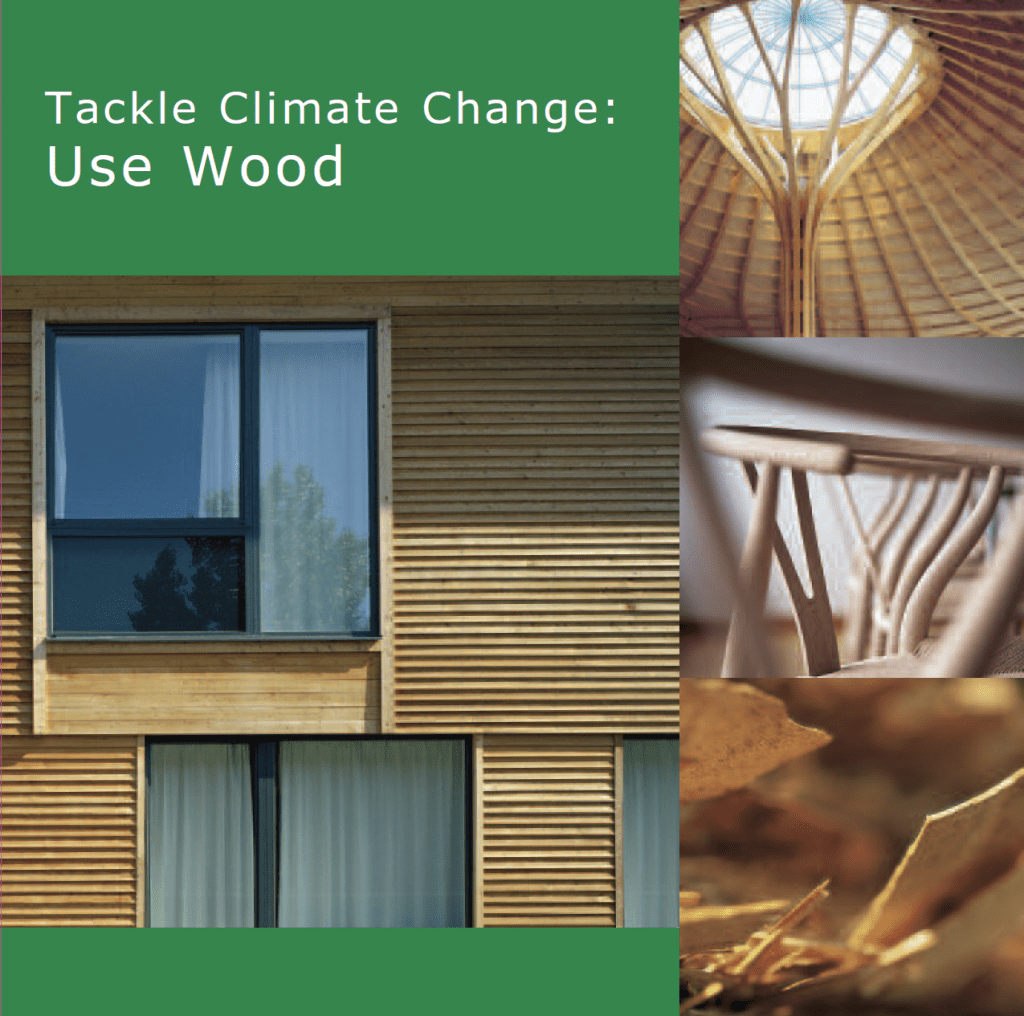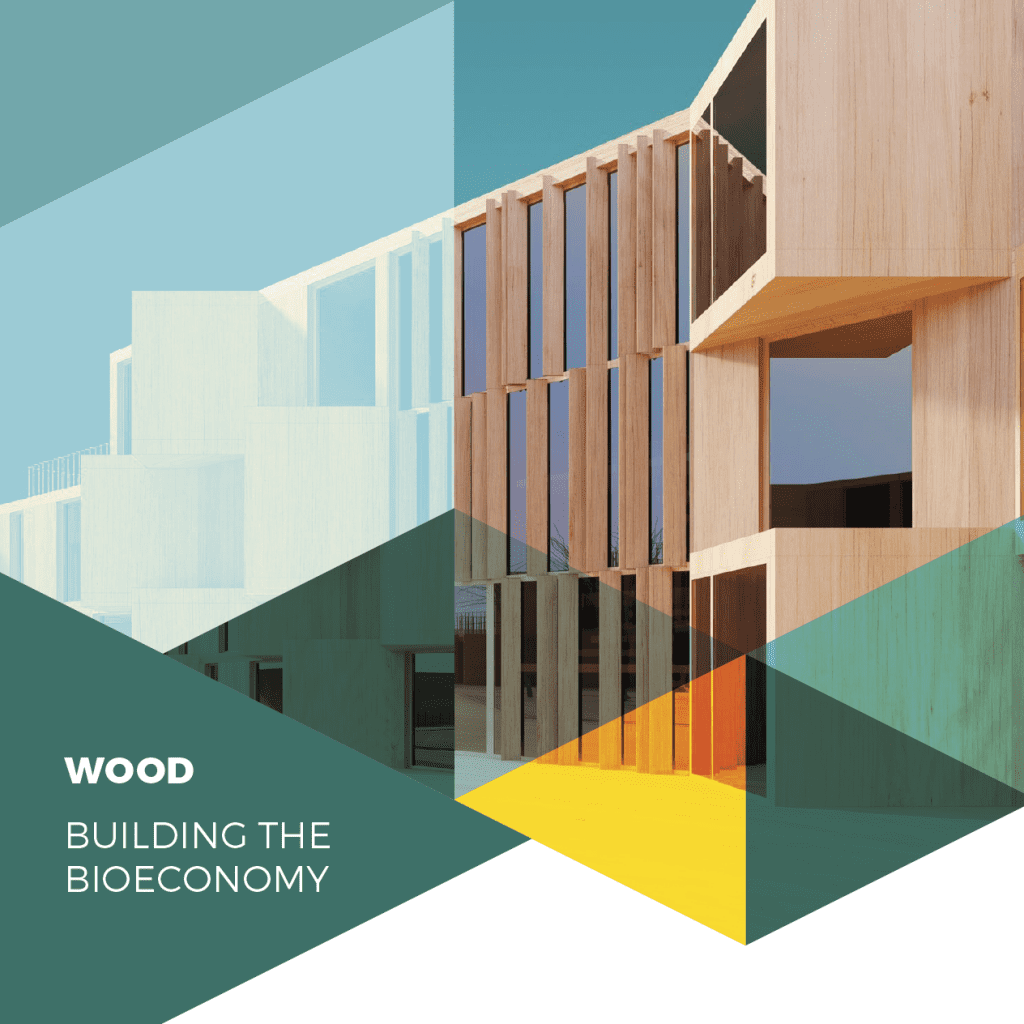The Breakfast meeting was organised by Miltton Europe on the 1 of march 2023.
See invitation and agenda Invitation: Breakfast Discussion
Written by Maria Wetterstrand, Miltton Europe. Any misinterpretations of the speakers intentions is the responsibility of the author.
Introduction: Fredrik Westin, Director of Swedish wood preservation association
Link to Presentation
- There’s a huge potential to use more wood in construction in outdoor applications and in the public realm, for example in infrastructure, fences, housing frames, decking etc.
- Treatment extends functionality and service life of wood 3-5 times, which could mean 15-50 years or even more.
- Wood replaces other materials, like steel and concrete which have a large carbon footprint. You can also use wood in hybrid constructions, to decrease the use of steel and concrete.
- The perception that treated wood is toxic and high risk is not correct anymore. Preservatives are tested according to the Biocidal Products Regulation and production follows the Industrial Emissions Directive.
- Even environmental labels accept treated wood nowadays, because assessments are focusing on a life cycle perspective, not only chemical risks reduction.
- Increasing the use of wood in outdoor applications requires new building systems and techniques, which means education is necessary along the value chain. Also circularity needs should be enhanced.
- It’s a challenge that new wood preservatives comes with a high cost and is an investment risk for companies, due to the way BPR works today.
- Other materials might use the same substances as a biocide, but as long as it’s not intended as a biocide it’s not restricted, which means that treated wood is at a disadvantage compared to other materials.
- This leads to slow R&D, reduced investments and a risk for lack of development within wood preservatives.
- In a worst case scenario we will then see wood products which are not fit for purpose and/or less wood used in the public realm. This would be suboptimal from an life cycle environmental perspective.
- Without preservatives, European wood species are not competitive and not fit for purpose in the public realm.
- What we need:
- Support the transition to wood by development, education and implementation
- Reduce bureaucracy of BPR and create sustainable holistic approach in the implementation
- Make competition even between building materials and systems, with sustainability benchmarks
- A bold move would be to use EPDs to set carbon restrictions to constructions in the public realm or to adopt a “wood first”-strategy
- Summary:
- Treated wood is safe and sustainable
- Preservatives extend functionality and service life, and makes European wood competitive
- Treated wood products are an important building block for the sustainable construction in Europe
Paul Brannen, Director of Public Affairs, CEI-Bois
- Building materials is an increasingly large part of the climate footprint of construction.
- New developments make it possible to use wood in more diverse applications than before, also in tall buildings.
- The Commission talks about the need to use more wood in construction, but the development is too slow.
- Buildings could go from having a relatively large carbon footprint to being carbon sinks, and using wood as a construction material is an important part of that.
- Wood in outdoor applications is important, to make wood as a building material more visible, but also because all use of wood in construction is important to reach carbon neutrality.
- Wood sequesters carbon, it substitutes other materials, it’s a carbon storage and it is sustainable and circular.
- Wood also promotes health and well-being
Ed Suttie, research director in BRE group
Link to Presentation
- General: A rethink concerning public realm construction, with more focus on less cars, connection to nature, improved air quality.
- Performance based specifications is the topic of the presentation
- BRE has tried to map user expectations for service time for different applications of wood in the public realm. Fence posts: 18 years; Cladding: 41 years; Timber bridge: 53 years. A lot of diversity in expectations.
- Complex to answer questions about durability and performance of wood products. Disadvantage compared to steel, aluminium, plastic and concrete.
- LCA misses vital technical specifications, risk for the wrong product to end up in the wrong place.
- Performance specifications for wood need to be enabled and used.
- European soft wood species need treatment to fulfil expectations.
- To reduce the amount of products that end up as waste, reliable and predictable performance is key.
- Service life information standards are being developed, in 2023 CEN standard EN460 was published, covering “Durability of wood and wood-based products – a guidance on performance”. Also national guidance exist in some member states.
- Also other types of support are being developed to create predictability and reliable information, help use the right product in the right application. CLICKDesign helps to predict how wood used in different ways in different regions will perform.
- Summary:
- The performance of wood should be specified
- EN460 available (in some cases national guidance)
- Specification tools available
- Product data delivering to build confidence
- Timber treatment upgrades European softwood durability
- Lifecycle benefits – reliability, social, responsible sourcing
Philippe Moseley, Policy officer on Sustainable Industrial Policy and Construction in DG GROW
- The Commission is taking a lot of initiatives to decrease the carbon footprint of the construction sector and promote a circular economy
- A lot happening in the world of sustainable construction and policy making
- Construction products regulation, Energy performance in buildings directive, The new European Bauhaus initiative
- 15th of March at the high level construction forum, a transition pathway document for construction will be unveiled. Based on feedback from the public and the sector. Staff working document in 2021 with scenarios for 2030, focus on green transition, digital transition and improving resilience, like upscaling and resilience of construction supply chains.
- Forum on 15th of March, everyone invited. What this transition pathway will do, bring together all the current policies that affect construction and set out recommendations for action
- Not necessarily commitments from the Commission as in a strategy or a communication, but recommendations not only from the Commission but based also on the feedback.
- High level construction forum – one top priority for this forum is the whole life carbon, reduction from emissions in construction. The whole construction eco system is very keen to tackle this.
- Working together with DG ENVI on a roadmap to reduce life cycle emissions from construction by 2050. Ongoing work, collecting data at the moment, will hold a public event in April about that.
- An expert working group is being convened for this, to help to produce a roadmap based on data from a study which is being finalised
- The roadmap will include some milestones for how we can reduce emissions from construction, ideally to net zero by 2050.
- The preliminary modeling results shows that it will take a lot of effort and be very difficult reach net zero.
- We need to try every single technological solution we can think of, including biobased construction but not only that. We also need to look at re-use, increased recycling, decrease demolition and even then it will still be hard to reach. We might also need to look at more uncomfortable issues like floor space per capita and other kinds of strategies that go beyond construction policies.
- There is a need for consistency of calculations of life cycle emission, so the Construction Products Regulation (CPR) is undergoing review.
- One of the key things in the Commission proposal is to have a mandatory carbon footprint data for every construction product and to have that in a harmonised way. Harmonisation of data is a key element and to tackle the backlog in standards, there are many outstanding standard requests for construction products.
- By having consistent carbon footprint data for construction prodcucts, including wood, it enables designers to select the most appropriate materials.
- Revision of the Energy performance in buildings directive, in the commission proposal there’s a requirement for all new buildings to calculate and declare their lifecycle carbon footprint, with the data coming form the CPR.
- This would only be a declaration, not mandatory limits to emissions of construction, but in some member states limits are applies. Debate is ongoing in the negotiation between Parliament and Council, we’ll see where it ends. Commission proposes only calculate and declare, it’s already a big step from where we are now.
- There is a lot of upskilling needed to happen in the industry. Some designers will be familiar with using wood, while others aren’t. Durability for example needs skilled labour and designers to use the wood correctly.
- Upskilling is another element of the transition pathway we will unveil in a few weeks time. Durability is a key element to increase confidence in wood as a material.
- Also have the New European Bauhaus, DG GROW is in regular contact with JRC who are running that, and there will be a skills academy in the new European Bauhaus for biobased and circular materials.
- Must not forget the importance of circularity also for biobased materials. Wood is a wonderful material but it has a circularity problem. Need more recycling and re-use for all construction products, including biobased. A huge opportunity for innovation, we are supporting Horizon which has been supporting biobased material and circular economy. Digital tools might help in this.
Nils Thorvalds, MEP Renew/ Finland
- Some quick comments from the Parliament.
- It is very important that we focus on the fact that buildings need to stand there after 80 or 200 years, also wooden structures.
- Historical events like fires are still affecting the attitude towards wood as a contruction materials, and we might be stuck in frameworks based on those presumptions.
- We have some real challenges which might affect the willingness to build, and regulations which affect the use of wood in construction.
- Cross-laminated timber used in Finland, but not a lot, and some problems have to be solved which increases costs to build in wood
- Pressure impregnated wood in ground contact, they might leak materials into the environment which could be problematic.
- We need development of preservatives in the wood preservatives in the industry, which take into consideration also biodiversity. It’s one big challenge we have.
- The industry has tried a lot of different things historically, but all solutions has some downside to them. There are still challenges in this regard.
- There are a lot of wooden buildings out there, but they are a bit more expensive than the alternative, which might affect the willingness to use wood.
Issues raised during panel discussion
- Wood would not be more expensive if other materials paid for their life cycle emissions
- The perception that treated wood is environmentally hazardous is not true anymore, it has changed a lot the last two decades.
- There might be a potential conflict between harmonisation and standards on one hand, and innovation on the other.
- There is a need for better dialogue between different actors.
- The difficult in getting new preservatives approved and to get investments in the sector might in worst case lead to less or no wood used in more demanding outdoor applications.
- The challenges of the construction sector in general, and also for wood construction, can not be solved in silos, but need cooperation and balance between different interests.
- DG GROW is cooperation a lot with other DGs but it might not always be enough.

